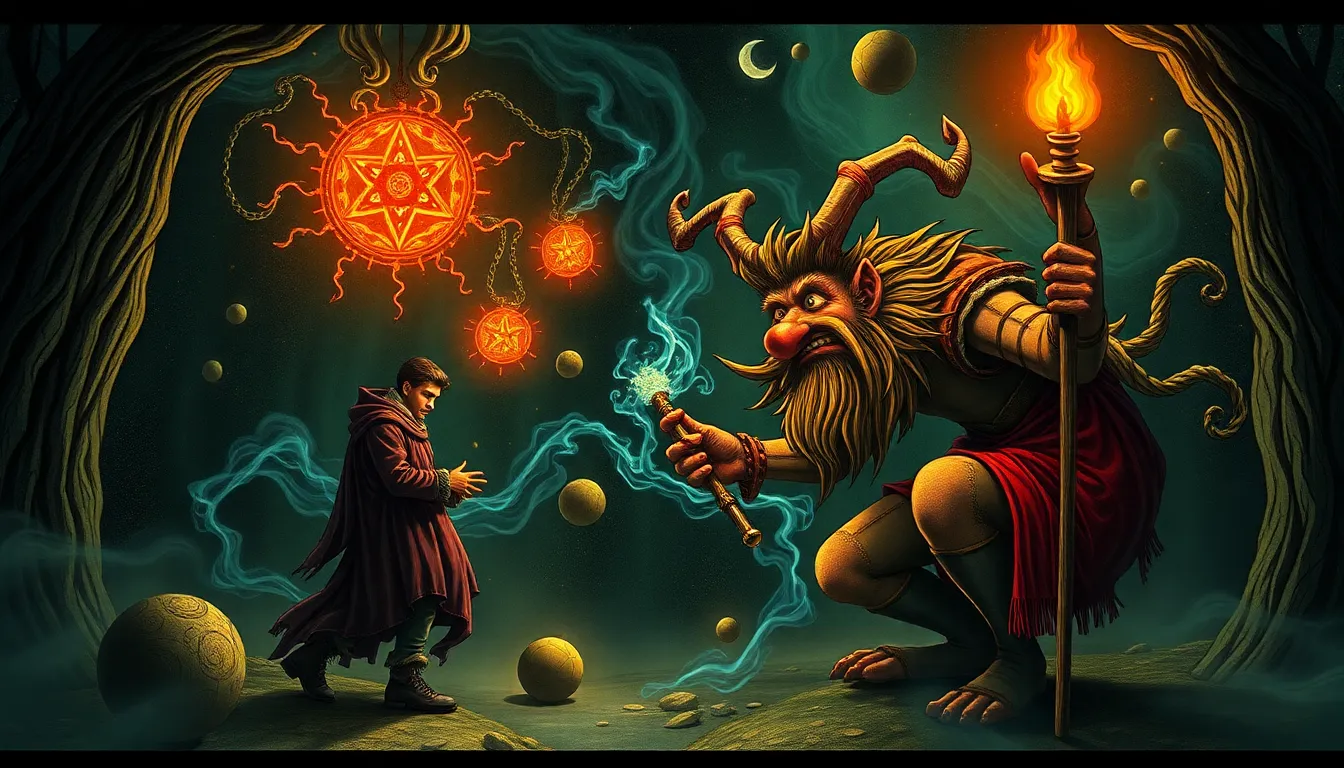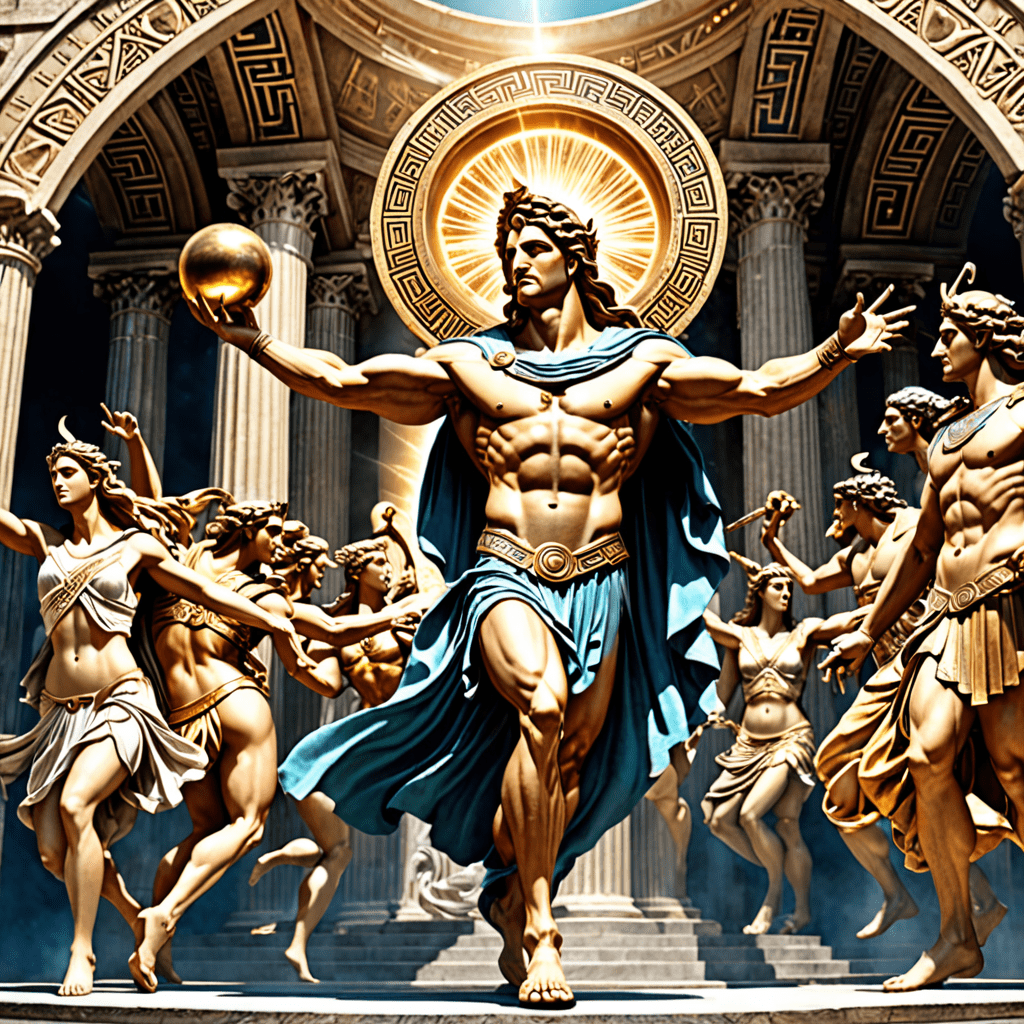The Trickster’s Influence on Modern Comedy and Satire
I. Introduction
The Trickster archetype is a complex and multifaceted character that transcends cultural boundaries, embodying qualities of mischief, deceit, and cleverness. Tricksters often challenge the status quo, using their wit and cunning to navigate social norms and hierarchies.
Historically, Trickster figures have deep roots in folklore and mythology, appearing in various cultures around the world. From the cunning Loki in Norse mythology to Anansi the spider in African tales, these characters bring humor and wisdom through their antics and subversion of societal rules.
In contemporary comedy and satire, the Trickster remains a significant influence, providing a lens through which social issues can be critiqued and examined. Their ability to bend reality and expose contradictions makes them essential in modern comedic narratives.
II. The Characteristics of the Trickster
Trickster figures share several common traits across different cultures, including:
- Cunning and Intelligence: Tricksters are often portrayed as highly intellectual, using their wits to outsmart others.
- Humor and Playfulness: They bring joy and laughter through their mischievous behavior and comedic situations.
- Deception: Tricksters often employ deceit, tricking others to achieve their ends.
- Subversion: They challenge authority and social norms, often leading to social commentary.
Notable Trickster figures in literature and folklore include:
- Hermes: The Greek god known for his cleverness and ability to move between worlds.
- Br’er Rabbit: A character in African-American folklore who uses his intelligence to escape difficult situations.
- Coyote: A prominent figure in Native American stories, often representing chaos and change.
III. The Trickster in Early Comedy
Trickster elements can be traced back to ancient theater, particularly in Greek and Roman comedies, where characters often engaged in deception and clever maneuvers to navigate romantic entanglements and social hierarchies. These early comedic forms laid the groundwork for the Trickster’s evolution in the medieval and Renaissance periods, where characters like the Fool in Shakespearean plays embodied the Trickster spirit.
Key historical figures who embodied the Trickster in early comedic forms include:
- Arlecchino: A character from the Italian commedia dell’arte, known for his cleverness and agile antics.
- The Court Jester: Often used as a vehicle for social commentary, these figures could speak truths to power under the guise of humor.
IV. The Trickster’s Manifestation in Modern Comedy
In contemporary comedy, many comedians embody the Trickster archetype through their performances. These modern Tricksters often challenge societal norms and provoke thought while entertaining their audiences. Comedians such as:
- George Carlin: Known for his sharp wit and criticism of societal norms.
- Eddie Izzard: Utilizes absurdity and clever wordplay to subvert expectations.
- Dave Chappelle: Merges humor with poignant social commentary on race and identity.
The Trickster’s role in stand-up comedy and improvisation is significant, as they often rely on spontaneity and audience interaction to create comedic moments. Television shows like “The Office” and films like “Deadpool” showcase Trickster characters who disrupt traditional narrative structures and challenge authority.
V. Satire and the Trickster: A Perfect Pairing
Satire serves as a powerful tool in society, allowing for critique and reflection on political and social issues. The Trickster figures enhance satirical commentary by using humor to expose hypocrisy and absurdity in human behavior.
Examples of satirical works influenced by Trickster archetypes include:
- Jonathan Swift’s “A Modest Proposal”: A satirical essay that employs the Trickster’s absurdity to critique social and political issues.
- Saturday Night Live: The show’s sketches often feature Trickster-like characters that comment on current events and politics.
VI. The Trickster’s Impact on Political Comedy
In political satire, the Trickster plays a crucial role in challenging authority and social norms. Late-night television hosts like John Oliver and Stephen Colbert often adopt Trickster personas to expose the absurdities of political life and societal issues. Political cartoons also frequently utilize Trickster elements to critique leaders and policies.
Key examples include:
- The Colbert Report: Stephen Colbert’s character utilized satire and exaggeration to challenge political figures.
- Political Cartoons: Artists like Matt Wuerker and Steve Bell use Trickster imagery to comment on current events.
The effectiveness of the Trickster in these contexts lies in their ability to disarm audiences, making difficult topics more approachable through humor.
VII. Cultural Variations of the Trickster in Comedy
Trickster figures appear across various cultures, each with unique comedic roles. In African, Native American, and Asian traditions, Tricksters often reflect societal values and concerns, using humor to address complex issues. Globalization has influenced the portrayal of the Trickster in modern media, leading to a blending of styles and characteristics.
Comparative analysis of Trickster characteristics reveals similarities and differences in comedic traditions:
- North American Tricksters: Often embody resilience and cleverness in overcoming adversity (e.g., Coyote).
- African Tricksters: Frequently highlight moral lessons through humorous tales (e.g., Anansi).
- Asian Tricksters: Often present philosophical insights through wit and humor (e.g., the Monkey King).
VIII. The Dark Side of the Trickster
While Trickster humor can be enlightening and entertaining, it also raises ethical implications. The potential for misinterpretation or perpetuating harmful stereotypes exists, leading to discussions about the line between humor and offense in Trickster narratives.
Balancing this fine line requires sensitivity and awareness, as Tricksters can sometimes reinforce existing power dynamics rather than challenge them. Understanding the context and impact of Trickster humor is essential for responsible comedic practice.
IX. The Future of the Trickster in Comedy and Satire
The Trickster’s legacy in comedy and satire will likely continue to evolve in response to societal changes. As new voices and perspectives emerge, the Trickster will adapt, reflecting contemporary issues while maintaining the core characteristics that define this archetype.
In an increasingly complex world, the Trickster’s ability to provoke thought, challenge norms, and bring laughter will ensure their relevance in the comedic landscape for years to come. As we navigate the challenges of modern society, the Trickster’s role as a catalyst for change will remain an essential part of our cultural narrative.



